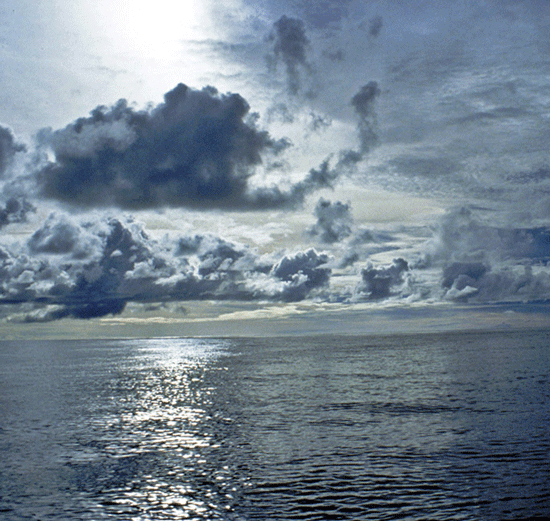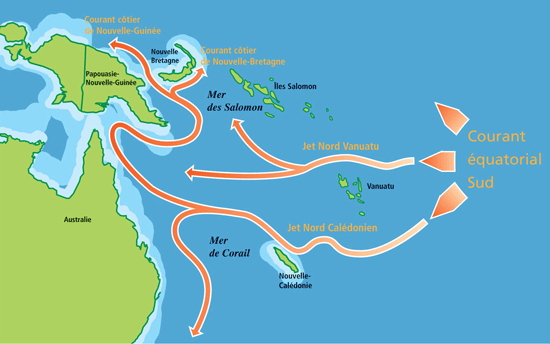The Southwest Pacific reveals some of its secrets

The Southwest Pacific ocean and the strong currents that travel through it play a major role in the world's climate. Running since 2008, the SPICE research program has allowed a great many in situ observations to be collected which were previously lacking. In parallel, scientists from around fifteen international laboratories have developed high-resolution digital models. This work has led to significant advances in our understanding of the dynamics of this ocean and its influence on the climate. Researchers are publishing an initial summary of the work in the Journal of Geophysical Research.
Despite playing a determining role on both the region's climate and the planet, the Southwest Pacific ocean had barely been explored. It is only recently, under the aegis of the SPICE (Southwest Pacific Circulation and Climate Experiment) research program led by IRD researchers, that the truth behind its currents has been partially uncovered. Scientists from France, America, Australia, New Zealand and Pacific Island countries have just published a new description of this ocean's circulation and variability.
The ocean under scrutiny
For seven years, significant scientific resources have been dedicated to collecting a large number of in situ observations. From 2008, a series of sea expeditions, underwater gliders and moored current meters made it possible to continuously monitor essential variables like the water's temperature and salinity, the direction and speed of the currents, etc. The oceanographers then combined their measurements and analyses in very high-resolution digital simulations to better characterise the regional circulation in this still largely undocumented strong-current area.
A complex circulation
Through an original ocean course, the Southwest Pacific feeds into the equatorial waters. In fact, the South Pacific's subtropical gyre generates an east-to-west current from Polynesia, circulating at a depth of 100 to 200 metres beneath the surface. When it meets numerous natural obstacles that form New Caledonia, Vanuatu, Fiji and their strings of islands, this South Equatorial Current divides up into different jets which travel the Coral Sea before reaching the Australian coast. The waters then fork. One branch feeds the Tasman Sea more to the south, between Australia and New Zealand, while the other moves northward, along the Great Barrier Reef, rejoining Papua New Guinea then the equatorial zone.

A global impact
The physical and chemical properties and movements of the ocean water masses have a huge influence on the climate. Representing an area for the transit and modification of the waters of the subtropical gyre before they reach the equator, the Southwest Pacific plays a fundamental role in the dynamics of El Niño type phenomena and biological production in the equatorial zone. The changing currents in this ocean, and their variability, both in intensity and temperature, are therefore of prime importance for a better understanding of both the processes that trigger and the scale of El Niño events and the consequences on oceanic productivity.
The SPICE program has therefore led to significant advances in our understanding of ocean dynamics in the Southwest Pacific. The instruments deployed in this region of the world continue to monitor the ocean dynamics, under the aegis of the CLIVAR (climate variability and prediction) program.
More information: Ganachaud Alexandre, Cravatte Sophie, Melet A., Schiller A., Holbrook N.J., Sloyan B.M., Widlansky M.J., Bowen M., Verron J., Wiles P., Ridgway K., Sutton P., Sprintall J., Steinberg C., Brassington G., Cai W., Davis R., Gasparin F., Gourdeau Lionel, Hasegawa T., Kessler W., Maes Christophe, Takahashi K., Richards K.J., Send U. The Southwest Pacific Ocean circulation and climate experiment (SPICE). Journal of Geophysical Research: Oceans , 2014, 119 (11), p. 7660-7686.
Journal information: Journal of Geophysical Research
Provided by Institut de Recherche pour le Développement (IRD)




















